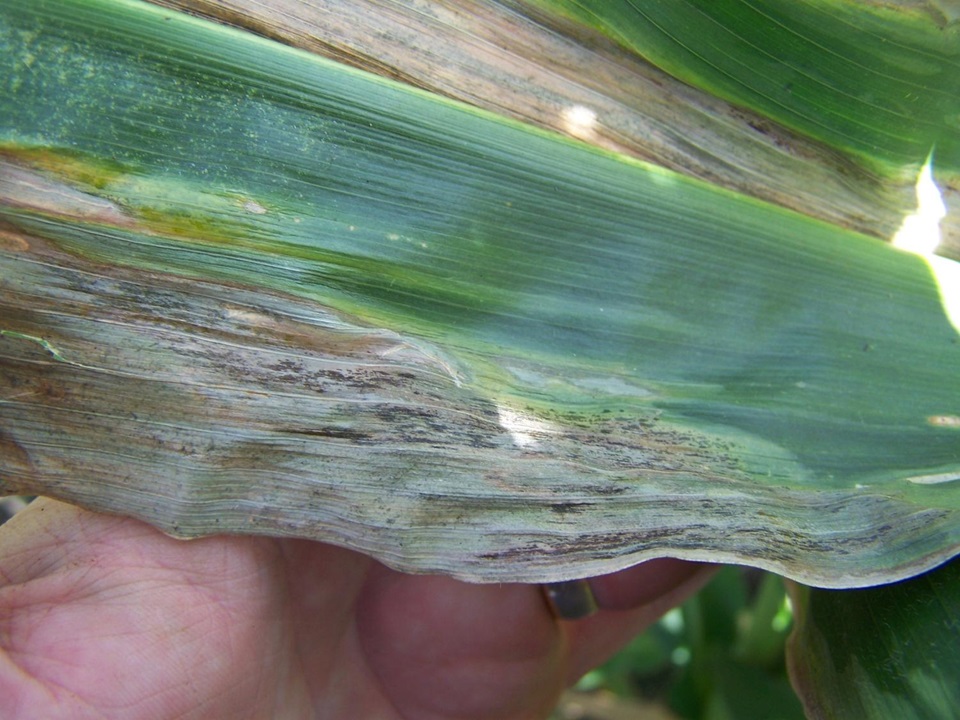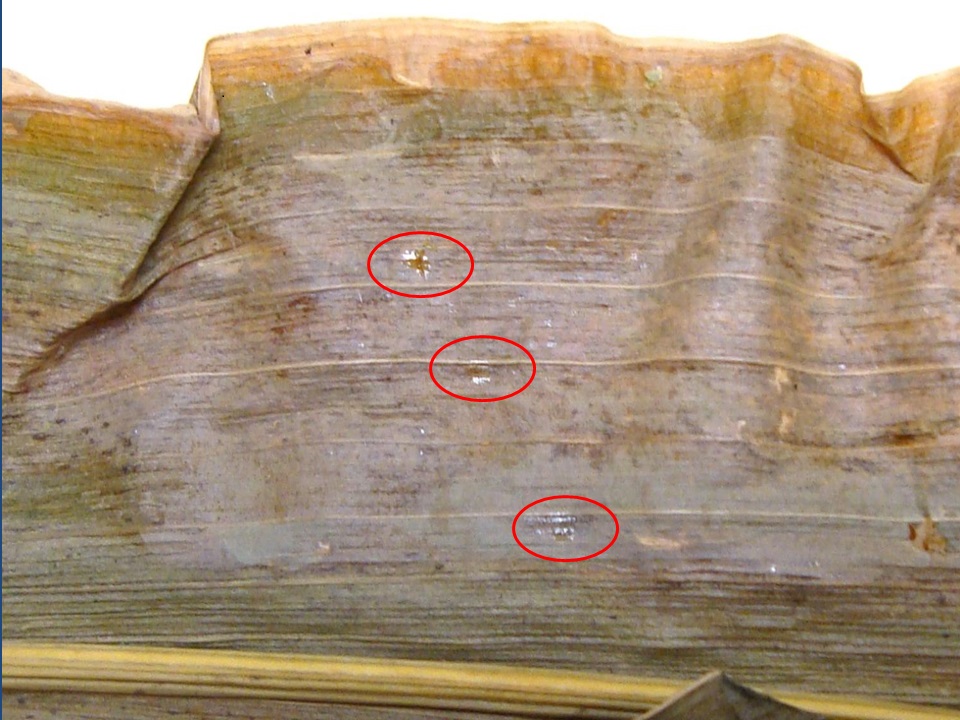Goss’s wilt of corn often is most severe after fields are exposed to high winds and/or hail damage, because the causal bacterium, Clavibacter michiganensis subsp. nebraskensis, readily infects corn leaves through wounds. With the recent storm activity across the state, growers should be on the lookout for the appearance of Goss’s wilt symptoms. Goss’s wilt lesions on the leaves generally have wavy margins with a water-soaked appearance on the edges of the lesions. Dark spots, known as “freckles”, almost always can be found within the lesions. The affected areas of the leaves will have a shiny appearance when observed in the sunlight, and bacterial exudates may be on the leaves that resemble drops of maple syrup.
 Goss's wilt symptoms on a corn leaf. Note the wavy margins of the lesion, the dark spots ("freckles") inside the lesion, and the water-soaked appearance of the lesion margin. |
 Bacterial exudates (circled in red) of the Goss's wilt pathogen, which appear as drops of maple syrup. |
Goss’s wilt incidence was at an all-time high in the 2011 season, with over 30 Illinois counties having positive detections via samples sent to the University of Illinois Plant Clinic. This high incidence observed in 2011 means that the causal bacteria is present in the state and can cause infections again in the 2013 season if the conditions are favorable. Fields that are at the most risk to Goss’s wilt are those that have been grown to continuous corn, have been planted to a susceptible hybrid, and have received wind or hail damage. Because other diseases and disorders can resemble Goss’s wilt, it is important that suspicious samples be sent to the University of Illinois Plant Clinic for the most accurate diagnosis. Be cautious of results received from test kits designed for the related bacterial canker of tomato pathogen, Clavibacter michiganensis subsp. michiganensis, because these kits have been shown to give false positives.
Unfortunately, no consistently-performing in-season control options are available for Goss’s wilt management. Because Goss’s wilt is caused by a bacterium, foliar fungicides are not effective. Other products may be marketed as providing control of Goss’s wilt, but field testing of these products by universities have shown these to be inconsistent and/or ineffective in providing reliable control of Goss’s wilt. The best way to manage Goss’s wilt is to rotate to a non-host crop, such as soybean, and plant the most resistant hybrid available the next time corn is in the field. Because the Goss’s wilt bacterium survives in corn residue, fields with severe Goss’s wilt can be tilled after harvest to help decompose the residue, which may help reduce the inoculum level in the field






Post a comment
Report Abusive Comment